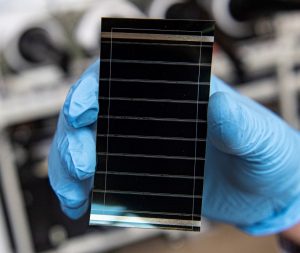Introduction:
Indium Tin Oxide (ITO) is a key material used in solar cells. Solar cells are devices that turn sunlight into electricity, and ITO helps make them work better. It is both transparent and conductive, meaning it allows light to pass through while also carrying an electric current. This makes it perfect for solar panels. In this article, we’ll look at how ITO is used in different types of solar cells and why it is important for clean energy.
Why ITO Matters in Solar Cells:
Solar cells need materials that let in the most sunlight and also conduct electricity efficiently. ITO does both. It allows sunlight to enter the cell while also creating a path for the electrical current generated from that sunlight. This makes solar cells more efficient, which means they can produce more electricity from the same amount of sunlight.
ITO in Thin-Film Solar Cells:
Thin-film solar cells are a popular type of solar panel. They use a very thin layer of material to absorb sunlight and convert it into electricity. These cells are lighter and more flexible than traditional solar panels. ITO is used in thin-film solar cells as a transparent electrode. This is a thin layer that conducts electricity without blocking the light.
The ITO layer is placed on top of the solar cell. Sunlight passes through the ITO and reaches the layer that converts light into electricity. ITO makes sure that as much sunlight as possible reaches this active layer, which boosts the amount of electricity produced.
ITO in Perovskite Solar Cells:
Perovskite solar cells are a new and promising type of solar technology. These cells use a special material called perovskite, which is very good at absorbing light. ITO is often used in these cells as the top layer because it is transparent and conductive.
The role of ITO in perovskite solar cells is to let light pass through while carrying the electrical charges generated inside the cell. This makes the solar cells efficient and cost-effective, which is why they are becoming popular as an alternative to traditional silicon cells.

ITO in Tandem Solar Cells:
Tandem solar cells use two or more layers of materials to capture more of the sunlight spectrum. This helps them convert more sunlight into electricity. ITO is important in these advanced solar cells because it acts as a transparent electrode. It lets light pass through the different layers while also collecting the electric charges created by the sunlight.
In tandem cells, ITO is usually placed on the front or back side of the cell. Its transparency allows all layers to get enough sunlight, which improves the overall efficiency of the solar panel.
Benefits of Using ITO in Solar Cells:
There are several reasons why ITO is a preferred material in solar cells:
-
High Transparency: ITO lets over 80% of visible light pass through, which is key for absorbing the most sunlight in the cell.
-
Good Conductivity: ITO carries electrical charges efficiently, which reduces energy loss and improves the performance of the solar cell.
-
Durability: ITO is resistant to weather changes like humidity and heat, helping the solar cells last longer.
-
Compatibility: ITO can be used with different materials, including flexible substrates, making it suitable for various solar technologies.
How ITO Is Applied to Solar Cells:
Manufacturers apply ITO to solar cells using a process called sputtering. This involves spraying tiny particles of ITO onto the surface of the solar cell in a vacuum chamber. This creates a thin, even layer of ITO that is transparent and conductive.
The ITO layer is only a few hundred nanometers thick, which is thinner than a human hair. It needs to be thin to let light through while still being thick enough to conduct electricity efficiently.
The Future of ITO in Solar Panels:
The future looks bright for ITO in solar panels. As new types of solar cells are developed, ITO will likely remain in high demand. Scientists are also working to improve ITO’s properties and to find materials that might work even better.
New solar technologies, like flexible and foldable solar panels, will benefit from ITO’s unique features. The ability to create lightweight and efficient solar panels could lead to new ways to use solar power in everyday life.
Conclusion:
Indium Tin Oxide (ITO) is a crucial material for modern solar cells. It helps solar panels convert sunlight into electricity more efficiently by allowing light to pass through and conducting electricity at the same time. Whether in thin-film, perovskite, or tandem solar cells, ITO plays a key role in improving performance and durability. As solar technology continues to grow, ITO will remain important in the shift toward clean, renewable energy.





